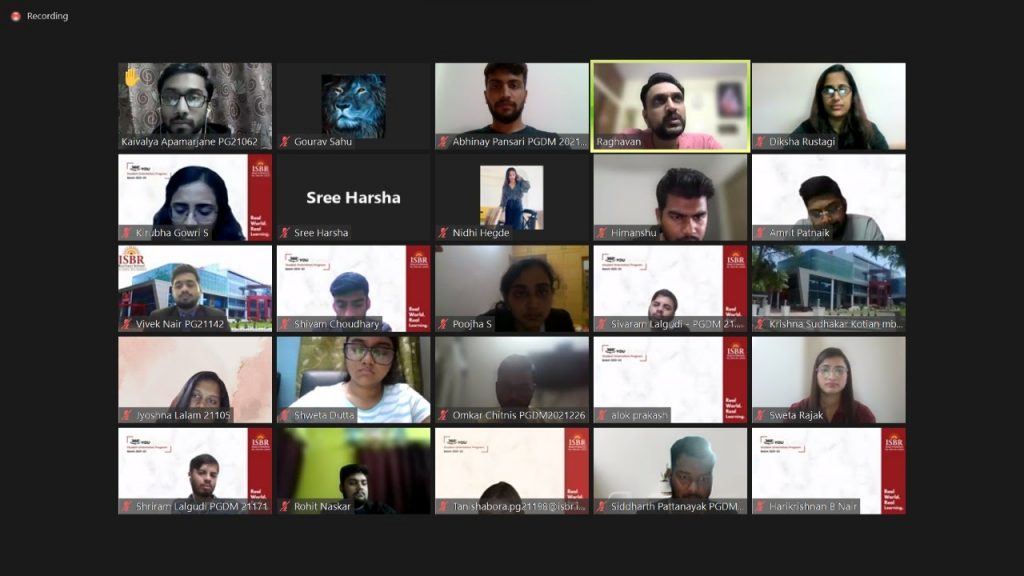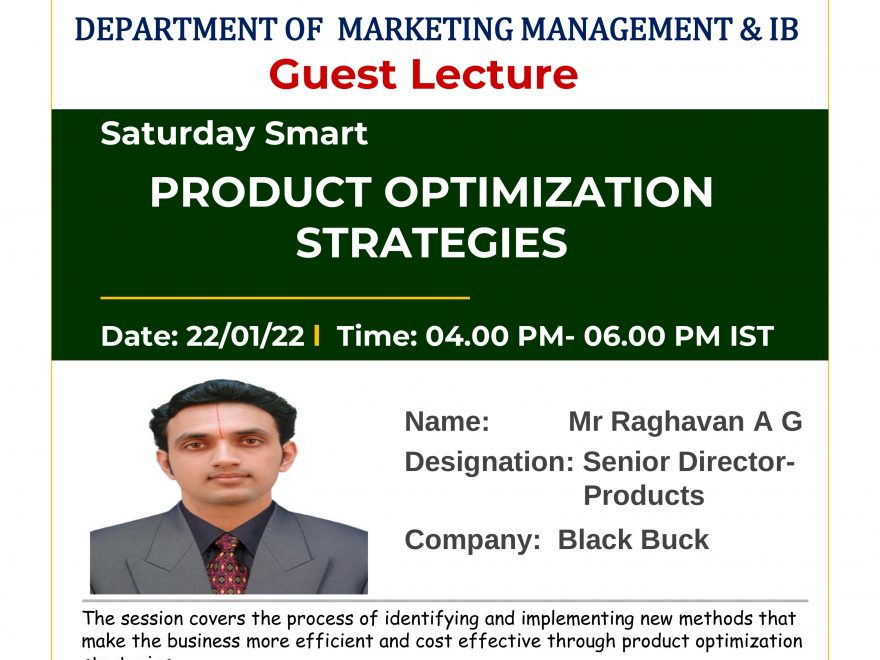We never miss any opportunity to imbibe knowledge on various fields in our student’s brain and so, we also conducted an online session on product optimization strategy.
Mr. Raghavan A G, our speaker, is a Great Lakes alumnus and the senior director of products at Black Buck in Bangalore. A product and technology visionary who enjoys addressing corporate and consumer issues. His strengths lie in broad picture thinking, thus he enjoys combining business needs with product and technological solutions. Scaling SaaS products and businesses in global markets is one of our core competencies. Experience in creating a vision, bringing people together, and ensuring that the vision is carried out.
Mr. Raghavan began by explaining student mix, followed by Dr. Guru Basava Aradhya’s explanation of student mix, background, and demography. Mr. Raghavan begins by discussing the market, its issues, and how to capitalise on possibilities on a daily basis. How we convert our want into a need determines the establishment of product-market fit and the success of the product.

Miss Shweta Rajak gave an introduction address during the event, describing Mr. Raghavan’s undergraduate history, professional experience, and specialties. Following the address, Mr. Raghavan, the day’s visitor, began his session by explaining product-market fit and product stages. The requirement for products as well as an explanation of the underlying issues. “A good product manager should be a good issue solver,” says one definition of a good product manager.
For example, how is a zoom conference offered as an alternative to offline meetings? Zoom understands the problem quickly and provides the solution that the customer requires. One of the important aspects he emphasises is that the key to creativity is curiosity, or the desire to learn about other people’s problems and solutions. Because there is always a scope, a service can only be capitalised if it has a capability. Opportunities are found in a person’s mindset. An individual must seek out opportunities on a regular basis to comprehend the problem and devise a solution..
Then he explains the product plan with a diagram, understanding of 5 stages of product building:
i) Unique selling price
ii) value proposition
iii) Product market fit
iv) Understanding needs
v) Target Customer.
For every product, individuals should know the product, service, and commodity.
Later on, he discusses Value Proposal, which is defined as “the identification of a societal problem,” “the importance of a high value proposition for the success of a product,” and “we get value proposition from products.” It is vital to have a good understanding of the customer market. The next step is to create a product that is unique in order to provide a wonderful user experience. He uses the example of aqua guard to demonstrate how he alters the product to increase profit.
Then there are characteristics of developing things such as growth vs. sustained growth, and sticking with a task is a behavioural trait that must be calculated. Multipurpose functionality should be included in the product. Consider Amazon Prime. Then he moved on to Channels, explaining what a channel is and how Mr. Raghavan defines it as a mechanism of distribution. For instance, at the office, internet outlets provide laptops with pre-installed Windows. As a result, app optimization, YouTube marketing, SEO, word of mouth, viral marketing, and other growth channels are required. When it comes to marketing any product, channel is quite important.
An example of a Channel he gave is Google, like how it handles everything under one name, many products work under one channel.
It means, Google is a Channel: –
i) Google workplace
ii) Google Sheet
iii) Google Doc
These are the products under an umbrella.
After all the explanation from our guest, Miss Shweta moves towards one major announcement regarding the introduction of a new course which Is based on product management. Then, we shifted to the question-answer round, where students ask almost 5 of the most important questions about product management.
The following are some of the takeaways from the event: The necessity of product management and the fact that the customer’s needs can only be met if we understand the product effectively are two major takeaways from this guest talk. Students should ask questions and be intelligent enough to comprehend the depth of the question and attempt to answer each one. The problem-solving solution we present to our customers has the advantage of meeting their needs.
We learn about the importance of product channels and how they are interconnected, as well as how to apply problem-solving skills to other people’s problems in order to be more effective.
Students’ feedback: Students asked Mr. Raghavan Sir questions, and he was able to answer all of them in detail. Students gave favourable feedback about the session, and they appreciated the efforts made by the management and faculties to organise it. This was a highly dynamic session, and the students are looking forward to more like it.
About ISBR: ISBR Business School, Bangalore-based, Top Class B School for PGDM or MBA, Consistently ranked as best B School in India, AICTE-CII Platinum Catagory, with multiple specializations.

